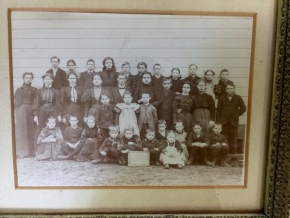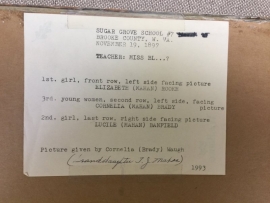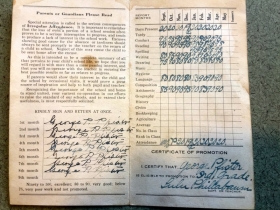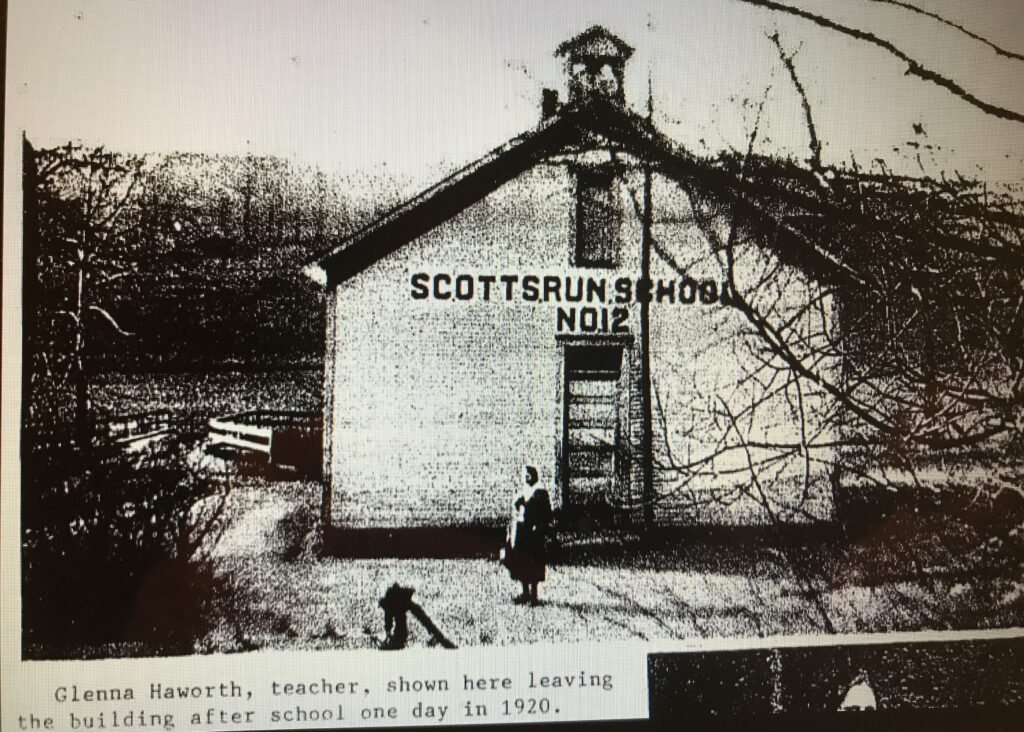Sugar Grove, a one-room school, was located at the east end of what is now Neville Street. Its name originated from the beautiful sugar maple trees in the surrounding area. The school dated back over 60 years serving the small community prior to the coming of the Follansbee brothers. Some of the pioneer families attending the school were: the Mahans, Bevinneys, Wheelers, Latimers, Allisons, Hamiltons, Walkers, Brownings, Carters, and Mays. The early school teachers were: William A. Strain, May Latimer, George Bryte and Judge Hervey, who served as a judge of the Circuit Court.
J.A. Walker Recalled Building Sugar Grove School
J.A. Walker, a descendent of the pioneer Jacob Walker family, was interviewed by the Follansbee Review in 1938. J.A. recalled being among the residences involved in building the historic Sugar Grove Schoolhouse that served the scattered farming community prior to the founding of the city of Follansbee. “Mr. Walker quarried stone on his farm and hauled it by oxen to the scene of the schoolhouse.”
Mr. Walker recalled vividly the names of other pioneers who aided in the construction of the school. Among them were “Andy Halstead and his son, Doyle, Thomas Hill, Albert Hunter, and Ross Wright, the latter having hauled lumber from Steubenville.” At the time of the interview, Mr. Walker was well into his 80s, and a great, great grandfather with relatives throughout Brooke county.
*Follansbee Review, “J.A. Walker Recalls Building of School,” June 23, 1938, p.1.
1897 Sugar Grove photos – Cornelia (Brady) Waugh via Follansbee Brooke Co. Library.
Goodwill School’s Historical Significance
A summer picnic was planned by the Tri-State Historical Association to be held on the Wells farm, August 20, 1939. “The Wells farm on the Follansbee-Eldersville road was chosen because of the historical background of the St. John’s community and Tent Church district, and also because the first free educational institution, known as the Goodwill school, west of the Alleghany mountains was created on the Wells farm.
*Follansbee Review, “ Tri-State Historical Association Picnic..,” July 27, 1939.
Other one-room schools or small schools that existed in the Cross Creek District from 1864 to the early 1900s were the following:
- Hope Farm (uncertain of location)
- Franklin (Washington Pike)
- Colliers Mine (Located at coal mine)
- Cliftonville (Cross Creak mining area)
- Colliers (in village of Colliers)
- Morton School (Archer Heights)
- Goodwill School (St. Johns Road)
- Tent School (Tent Church Road)
- Ebenezer School (Near Louise – mining area on Cross Creek)
- Scott Run School (Near Virginville – mining area on Cross Creek)
- Stockdale School (Rockdale – on Cross Creek close to present day Brooke High School)
- Anderson (Archer Heights)
- The Shed (three-room building of boards near location of present Jefferson School)
- Fairy Glen School (On river bottoms north of Market St. Bridge, near Holliday Cove)

Rockdale School Cross Creek, circa 1916. Photo courtesy of W.Va. State Archives. (See Timeline, October 1915, Reports from District Schools)
1914 Report Card Photos Courtesy – George Pfister
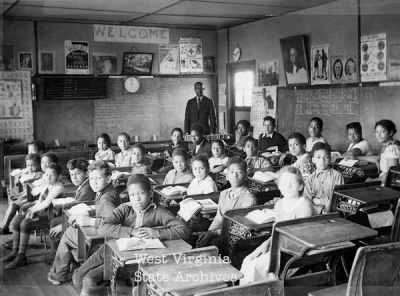
One-room Anderson (African-American) school was located on Archer Heights. Mr. Whittaker was teacher. Ernest D. Anderson is seated, first row, third from back. During the 1930s-50s, wooden steps allowed folks to walk up the rocky hillside from Market Street Bridge and East Steubenville area to Archer Heights where a number of African-American families lived. Photo: 1937 WV State Archives.
